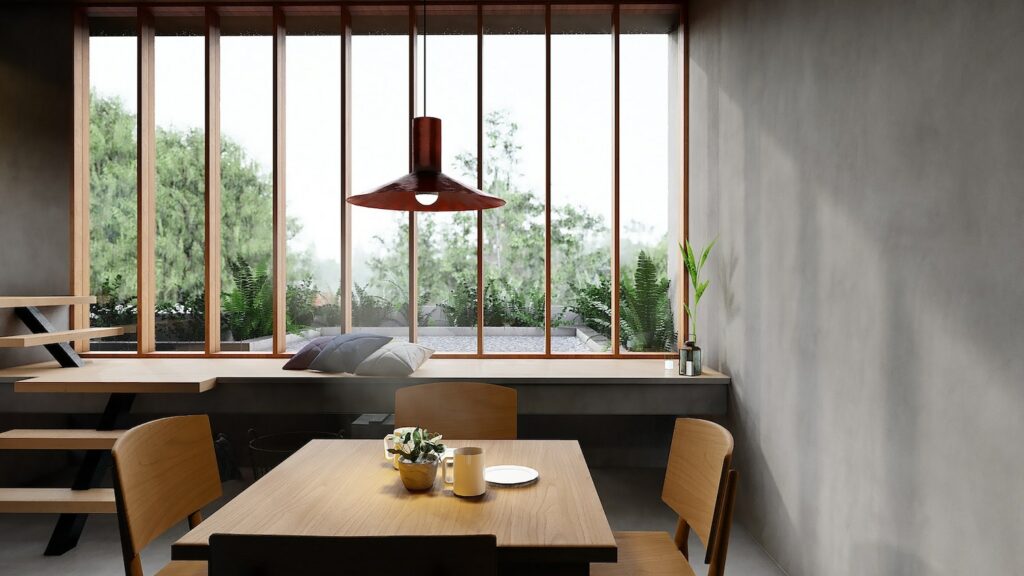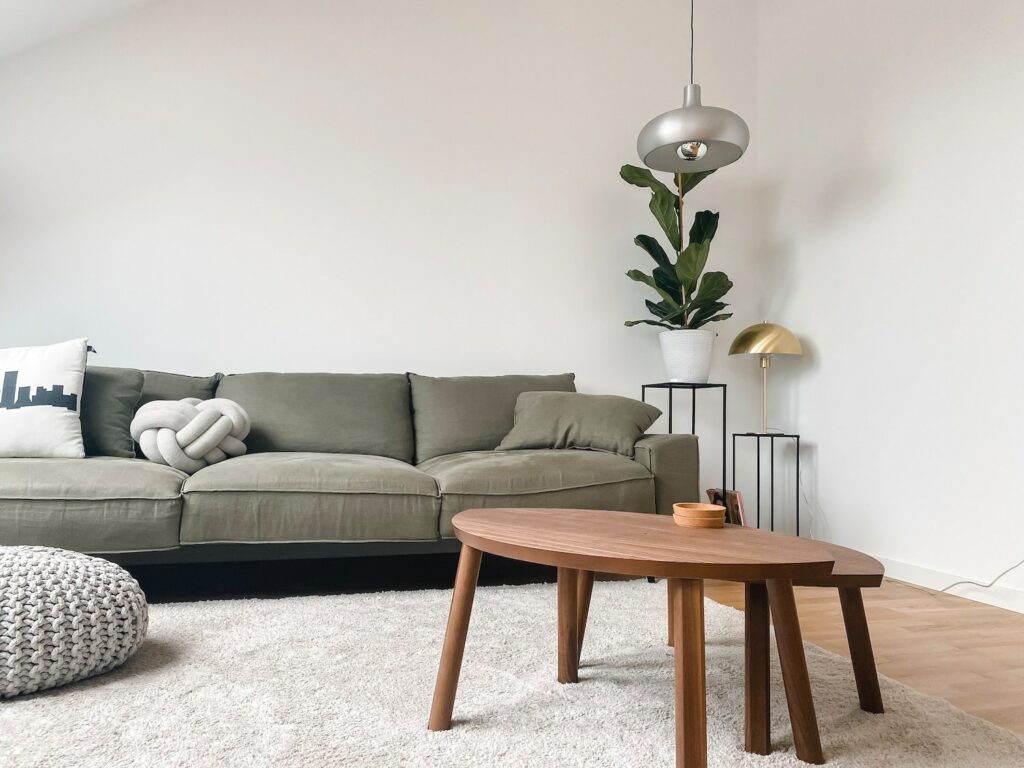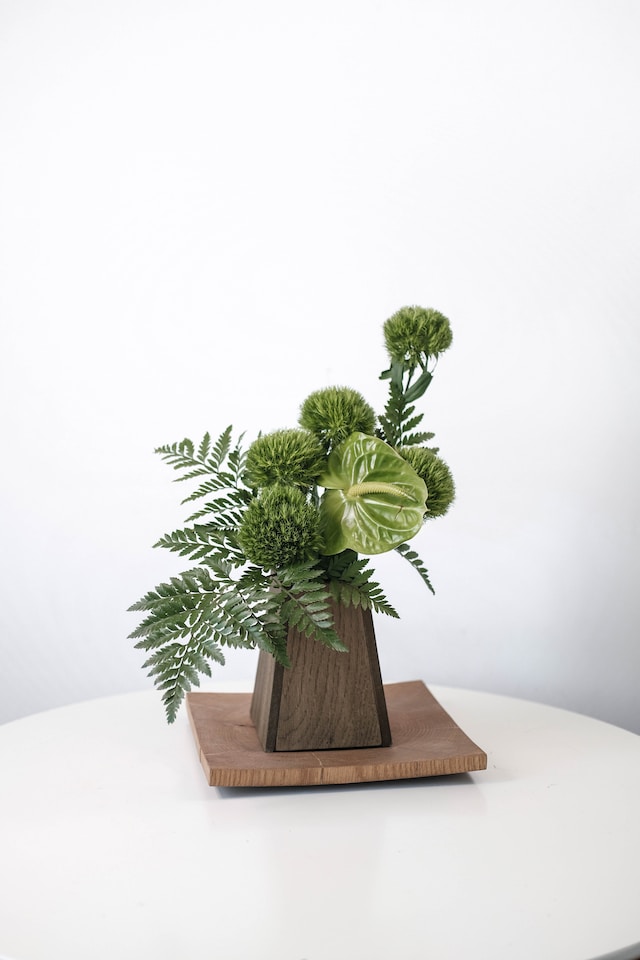What is Japandi?
Japandi is a trend in interior design where aesthetics and culture blend together in harmony. Celebrating the mix of cultures, Japandi design combines Japanese minimalism with Scandinavian coziness. This design makes spaces that connect with both Eastern and Western styles, using natural tones and a sense of simplicity. In this blog post, we'll explore this trend to see how Japan and Scandinavia's ideas come together in a modern look and check out how it's used in interior design.
How Do the Scandinavian and Japanese Cultures Mix Together?

As a unique combination, Japandi creates peaceful interiors that bring a sense of calm. With clean lines, calm colors, and tidy spaces, Japandi follows the "less is more" idea. In interior decor, calming and peaceful palettes are prioritized, and if brighter colors are added, it's done elegantly. Similar to the “Wabi Sabi” philosophy from Japanese culture, the Japandi style also emphasizes sustainability. The prevalence of natural materials and simple design transforms it into a wonderful green decor style.
On the other hand, Scandinavian culture embraces “hygge”, aiming to create a warm and comfortable space. This concept focuses on fostering a cozy atmosphere that encourages relaxation and a sense of well-being at home. The “hygge” philosophy revolves around the idea of enjoying life's simple pleasures, such as warm lighting, comfortable textiles, and shared moments with loved ones.
Fundamentals of Japandi Design/How to apply it to your home?
In the Japandi trend, the usage of handcrafted decor is prominent. Handmade decorations bring a touch of authenticity and uniqueness to spaces. Items like woven textiles and pottery created through skilled hands, introduce textures, colors, and forms that harmonize with Japandi's simplicity. This emphasis on handiwork not only enhances visual appeal but also connects modern living environments with traditional techniques, showcasing the value of human creativity. So, you can truly experience the philosophy reflected by the Japandi trend in your living spaces with homemade decorations. When you're incorporating these new interior design elements into your home, keeping track of your project is a good idea. By making a to do list, you can ensure that you create a cohesive and visually appealing space that meets your needs.
Use wooden furniture: Wooden furniture not only adds a touch of nature to your living spaces but also fosters a sense of connection to the environment because of its natural textures and warm tones. The use of wooden furniture in interior design creates a balance between the minimalist aesthetics of Japanese culture and the coziness of Scandinavian design. By introducing wooden furniture, you can effortlessly infuse your surroundings with the calming Japandi trend.

Sense of openness: Low-profile furnishings contribute to the minimalistic atmosphere that Japandi design aims to achieve. These pieces create a sense of openness, allowing for clear views and a harmonious flow within the living space. Low-sitting furniture enhances the connection to the ground, fostering a grounded and relaxed ambiance. This design choice aligns with both the Japanese and Scandinavian principles of functionality and simplicity, making it a key element in capturing the essence of the Japandi trend.
Simplicity and functionality: Mindful furniture selection in homes can achieve the principle of simplicity and functionality of the Japandi interior design trend. Opt for minimalistic furniture pieces with clean lines and organic shapes. Choose multifunctional furniture that serves dual purposes, such as storage beds or nesting tables, maximizing space efficiency. Embrace neutral color palettes such as amber color and natural materials for a calming ambiance. To enhance functionality, select furniture that prioritizes comfort without compromising on design. By carefully curating your furniture with these concepts in mind, you can aesthetically integrate the essence of Japandi design into your living spaces, promoting both calmness and practicality.
Touch of Nature: Plants as a decor element add a touch of nature’s calmness to living spaces. You can start with low-maintenance plants like succulents or snake plants. Place them in simple, minimalist planters made of natural materials such as clay or wood. Do not forget to position them near windows to maximize sunlight exposure. You can also add a different touch to your home by choosing plants native to Eastern Culture, such as lucky bamboo, orchids, or bonsai trees. Another approach is using hanging plants or creating a small indoor garden corner. These green touches not only enhance the visual appeal but also contribute to the calming ambiance that Japandi design aims to achieve, a harmonious mix of nature and aesthetics in your home.

Soft colors: Natural shades like pastel tones, muted grays, and soft blues dominate the Japandi design trend by contributing to the sense of calmness and balance. These color tones create a feeling of serenity, which perfectly aligns with the peaceful philosophy of Japandi design. You can apply this essence of Japandi to your walls, furniture, and decor elements. You can effortlessly infuse your living space with the calming energy that is characterized by this design trend. This soft color preference not only creates visual charm but also creates a peaceful ambiance for relaxation which reflects the Scandinavian kind of living art “hygge”.
Conclusion
Japandi design presents a blend of Japanese minimalism and Scandinavian coziness, creating a unique and balanced interior decor style. By incorporating handcrafted decorations, wooden furniture, low-profile furnishings, simplicity, functionality, a touch of nature, and soft colors, you can authentically embrace the essence of Japandi in your living spaces. This trend encourages a calm and balanced atmosphere that resonates with both Eastern and Western philosophies. By infusing your home with the principles of Japandi design, you can create a space that not only reflects the beauty of two cultures but also creates a sense of calm, well-being, and connection with nature within your living environment.

It’s look like Ikea style? I think..